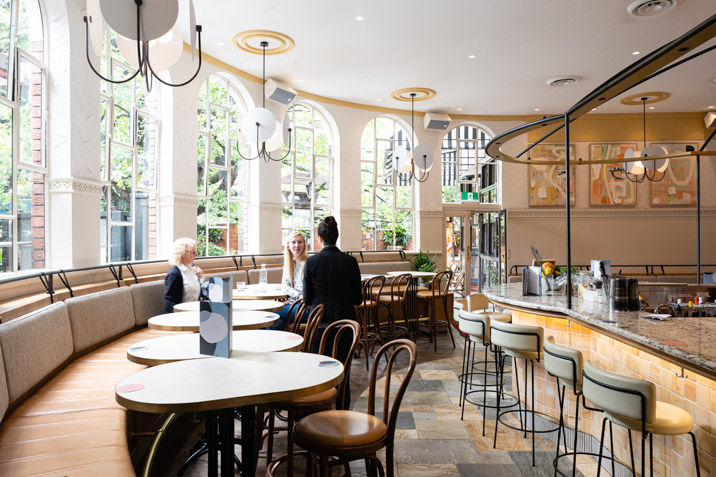From the architect:
Fronting onto the famous 70-year-old oak tree that gives Sydney icon, The Oaks Hotel, its name, Alala’s brings the outside in with glorious style.
Bathed in natural light via huge windows, the new space features lots of warm timber and marble tabletops, accented by specially commissioned artwork – though the star of the show is without question the magnificent oak tree visible through every garden window.
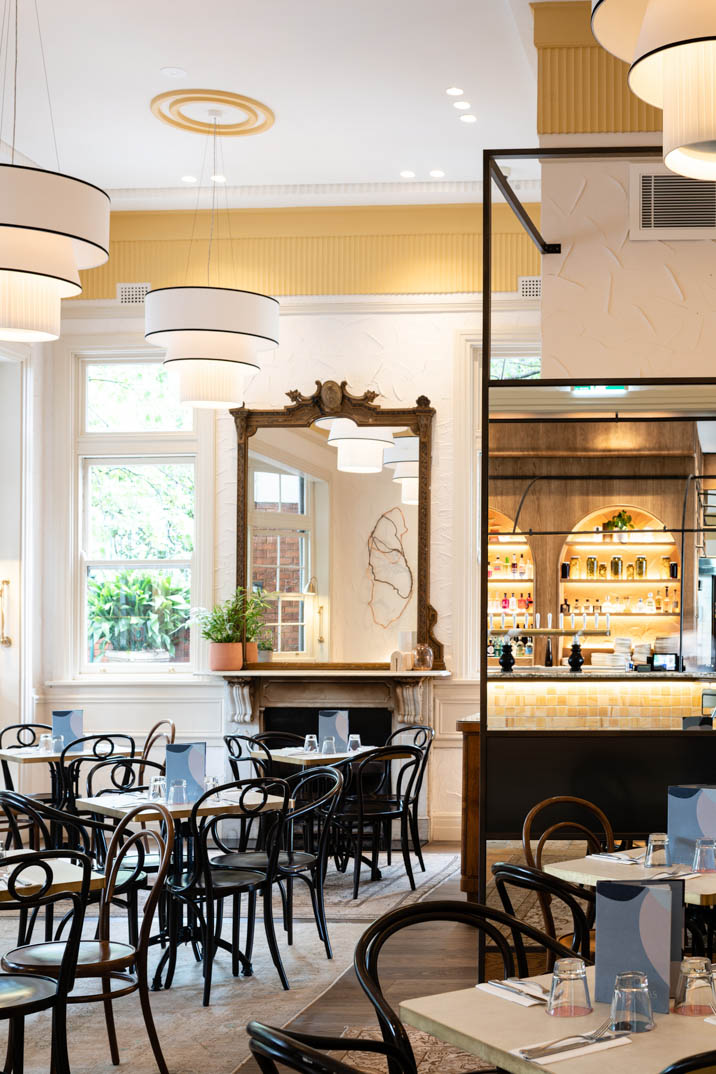
Custom sandstone tiles surround the bar to echo the sandstone garden beds outside while varied and textured stone flooring guides guests seamlessly through the space. As well as an indoor area, there is an outdoor terrace beneath the branches where chic wicker and rattan chairs sit in dappled sunlight.
Lemon hues signal springtime and invoke aromatics from the cocktail bar. It’s an Art Deco-inspired haven – the perfect spot to enjoy a long summer lunch or an al fresco afternoon of cocktails.
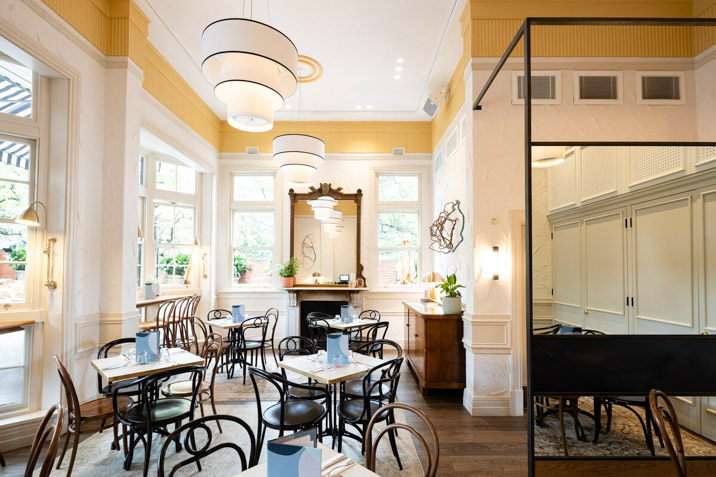
Alala’s garden conservatory is named after the mother of David ‘Taffy’ Thomas, who bought the Oaks Hotel in 1975 and is inspired by her contemporary thinking in her time. The feminine to the adjoining sports bar’s masculine sensibilities, the space needed to be transformed into an elegant restaurant that caters to a more discerning crowd.
To do so, the design focused on meticulous detailing, such as commissioned artwork by a local artist, maximising the natural light, and ensuring a visual connection to the beloved oak tree— a huge priority for the client.

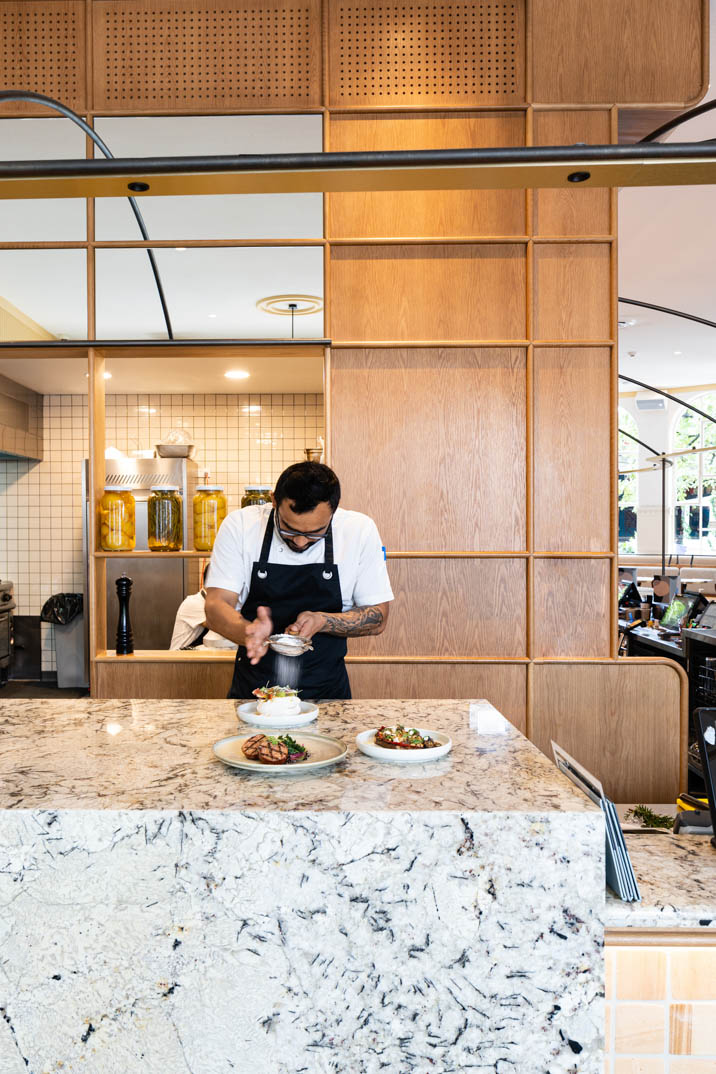
The original 1930s bar layout has been brought to life. Colour palettes influenced by the dappled sunlight of the tree meld the indoors and outdoors, doubling the terrace as a café in the mornings. Parisian-style seating invites guests to nestle into sumptuous, creamy cognac leather seating nooks.
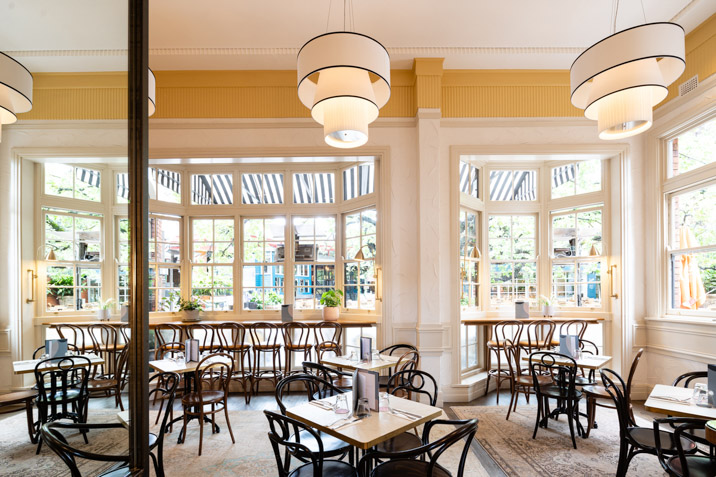
An oak tree as iconic as that at The Oaks requires a very careful and considered approach to the design of the space around it. The design marries history and contemporary thinking, sympathetic to 1930s design while using modern colour palettes and textures to create a unified aesthetic. The history of the building’s architecture has been carefully honoured, re-establishing the original layout of the 1930s bar, making sense of the surrounding architecture and curved windows.
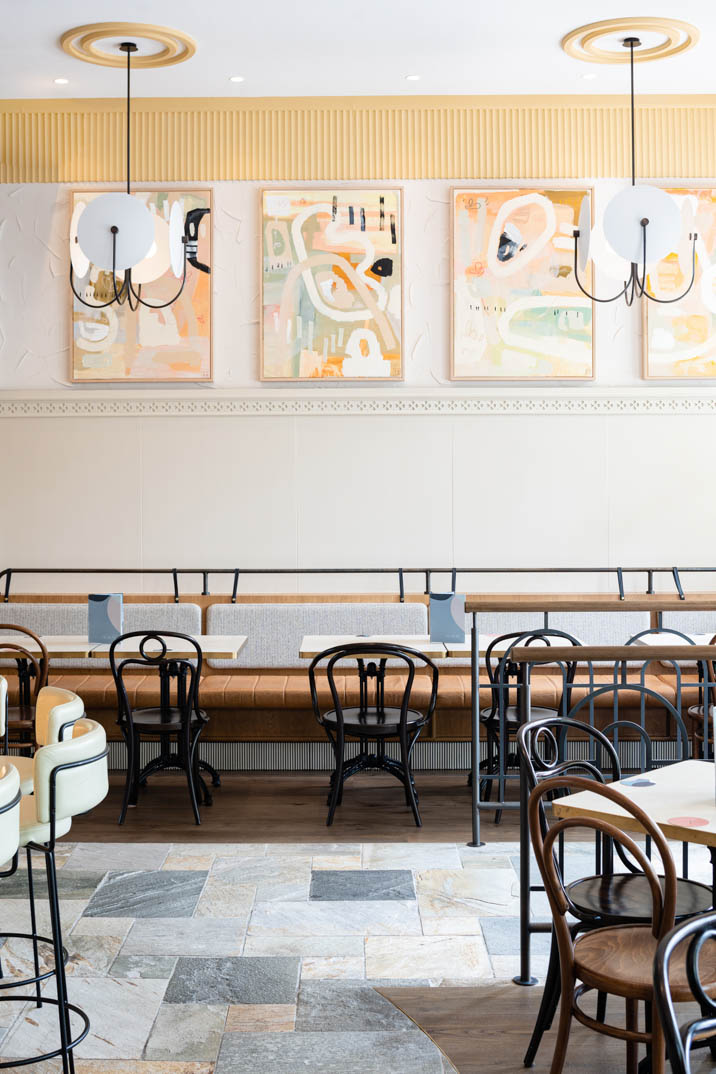
The space now connects to the kitchen – which is open, for customers to enjoy the cooking experience – and the adjacent take-away homestyle offering, addressing changing customer needs and providing a late-night solution to ‘getting one for the road’.
The design carefully caters to the outdoor environment, enabling the venue to enjoy a springtime atmosphere, whatever the weather.
